Browse Exhibits (120 total)
Plays and players
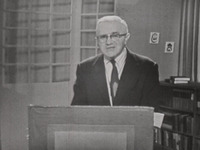
8 episodes, 1953, WQED (Pittsburgh)
From WNET:
"This series offers the general audience a chance to gain a better appreciation and understanding of the development of the actor and his medium. Included are various style of theatrical presentation with the contributing forces present in a given area. The styles and eras covered are: classic theatre, romantic theatre, realistic theatre, and the twentieth century theatre. Arnold Moss and John Gassner appear on alternate programs outlining the broad basis for the understanding of the theatrical style, discussing style and acting in the context of its audience, its architecture, design, literature, etc. The series was produced by WQED, Pittsburgh."
Philosophies of education
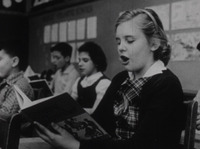
13 episodes, 1961, KTCA (St. Paul)
From WNET:
"A genuine understanding of the complex problems facing American education requires an appreciation of the concepts underlying each issues and problem. These concepts or philosophies, marked by controversy in some quarters, today command an increasing amount of attention from everyone directly or indirectly involved in American education. This series is a thirteen-program survey of, and a striking introduction to, the varieties of contemporary educational thought. Each program consists of an interview with an educator who represents a particular philosophy of education. Each is illustrated with filmed examples of the particular philosophy in practice. Station KTCA-TV in St. Paul-Minneapolis produced the series. The producer was Joseph T. McDermott, the station’s special projects director."
Understanding the child
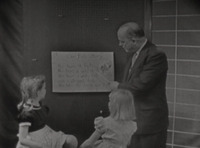
1954, 7 episodes, University of Michigan Television
From WNET:
"Course instructor is Dean Willard C. Olson, Dean of the College of Education at the University of Michigan and well-known authority on child growth and development. In this series of programs, Dean Olson discusses children’s physical, intellectual, social, and emotional development and the relationship to an over-all growth pattern. The course is designed to aid parents by making them familiar with growth patterns, and by indicating a constructive philosophy of child rearing based on understanding, love, and patience. Produced by University of Michigan Television."
Understanding numbers

1954, 7 programs, University of Michigan Television
From WNET:
"This series is aimed at developing a better general understanding among viewers of basic mathematical principles. It is presented in a simple, straightforward style with the help of charts and other illustrative devices. This tele-course offers students an increasing understanding of numbers as well as some of the fun and fascination which numbers have provided for many persons from pre-historic times. The series was produced by the University of Michigan Television Department."
Uncle Wonder's Workshop
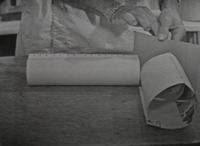
1958, 26 episodes, WCET (Cincinnati)
From WNET:
"Uncle Wonder makes the principles of the sciences simple for the pre-school child. Glenn Ryle, as Uncle Wonder, participates with children in their own world to help them discover some of the “truths” of the world. The series emphasizes power and includes simple demonstrates of natural phenomena such as gravity, sound, light, etc. Uncle Wonder operates in a three-part workshop: workbench for woodworking and demonstrating; nursery section for planting and plant demonstrations; and a laboratory setting for work with water, chemicals, and other liquids. Uncle Wonder makes the principles of the sciences simple for the pre-school child. He uses domestic objects, such as a milk bottle or a bar of soap, to illustrate how rain is formed or how surface tension works. Many of his TV experiments can be duplicated in the home with materials normally at hand. Uncle Wonder in each program invites his viewers into his workshop where he answers many of the questions of wonderment that fill the minds of little folk."
Red Myth

13 episodes, 1961, KQED (San Francisco)
From WNET:
"Thirteen half-hour programs from KQED in San Francisco describe the history of Communism, from Marx to Khrushchev, and explore some of the major fallacies in this system of thought. Each program contains commentary by noted historians and scholars, film clips of some of the historical events described, and re-enactments of other important episodes in the rise of Communism. Based on documents in the Hoover Institution of War, Revolution and Peace at Stanford University, the dramatic scenes are all adapted from the speeches and writings of the significant figures of the period – Marx, Lenin, Trotsky, Stalin and many others. The settings, costumes and makeup for the actors were carefully designed to reproduce with the utmost fidelity the figures and locations of the scenes they recreate, and were based on contemporary photographs and portraits in the archives of the Hoover Institution."
Sing Hi, Sing Lo
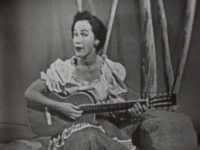
104 episodes, 1958-1959, KQED (San Francisco)
From WNET:
"'Sing Hi – Sing Lo' presents for youngsters the folklore of America through folk dances and folk song. Each program concentrates on one subject; some of the programs include appropriate film clips to better illustrate the material. The folk songs (sing by Bash Kennett who accompanies herself on her guitar) are tied in with the narration; while many of the songs are familiar to the children of America, some of them are lesser known and are truly descriptive of times past. A group of young dancers performs some of the songs. Through “Sing Hi – Sing Lo,” children will learn about people, events and customs which are a part of American history. They will better know their own country and understand the purposes, traditions and activities of their land. The series was produced by KQED, San Francisco, with Kay Rawlings as producer."
The Written Word
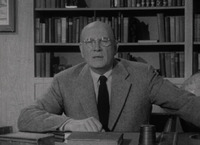
15 episodes, 1957, Department of Cinema, University of Southern California
From WNET:
"This long-awaited series featuring Dr. Frank Barter tells the story of human records from primitive marks and pictographs to the coming of modern machine methods of printing after 1800. Using pictures, charts, maps, blackboard, and many models and demonstrations, the program tells the story of our alphabet from its Proto-Semitic beginnings to important families of modern typefaces. Attention is given to cuneiform writing and to the many varieties of writing of the Egyptians. The basic writing substances of the western world (clay, papyrus, parchment and paper) are all discussed and actual demonstrations show the making of a clay brick and the manufacture of sheets of papyrus and paper. Dr. Baxter demonstrates the art of block printing, and on a model of an early press prints a small four-page folio book. Most of the models, drawings, and visual materials used on these programs are the work of the lecturer. Original manuscript and printed leaves and books are displayed and commented on. Dr. Baxter feels that this brief series constitutes an interesting introduction to the history of the written and printed word. A bibliography prepared by Dr. Baxter will be available for distribution."
A Time to Dance
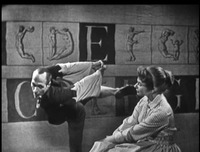
9 episodes, 1960, WGBH (Boston)
From WNET:
"A TIME TO DANCE is a series of nine programs which serve to introduce the audience to the three major dance forms – modern, ballet, and ethnic. Hostess-commentator Martha Myers and a distinguished group of dancers explain and illustrate the differences between each form, their special qualities and traditions, and their relations to each other through common sources. The dancers and Miss Myers perform excerpts from noteworthy dances, and discuss different attitudes towards the life and work of a dancer. In addition to performances by such well-known dancers as a Maria Tallchief, Andre Eglevsky, Jose Limon, Nora Kaye and Geoffrey Holder, Miss Myers uses early prints and unusual films of earlier artists such as Anna Pavlova and Ruth St. Denis to trace the changing look of dance."
Tension areas
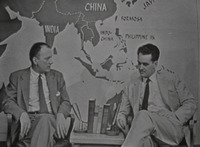
6 episodes, 1955, University of Michigan
From WNET:
"This is a series of discussions of vital "tension areas" in the Far East and their importance to the United States. Appearing as guest on each program is Albert Ravenholt, correspondent of the American Universities Field Staff and staff correspondent for the Chicago Daily News. Mr. Ravenholt is considered one of the nation's best-informed men on the Far East. Moderator for the programs is Dr. George A. Peek, Jr., assistant professor of political science at the University of Michigan. Other participants include Dr. John W. Hall, assistant professor of history and acting director of the Center for Japanese Studies; Dr. John W. Lederle, professor of political science and comptroller of the State of Michigan; Dr. Charles M. Davis, professor of geography; and Dr. Theodore M. Newcomb, professor of sociology and chairman of the doctoral program in social psychology, all at the University of Michigan. Important problems discussed are: Formosa, Hong Kong, the Philippine Republic, The Impact of U. S. Military Aid in the Far East, Chinese Minorities in Southeast Asia, and the Challenge of Rural Asia."

